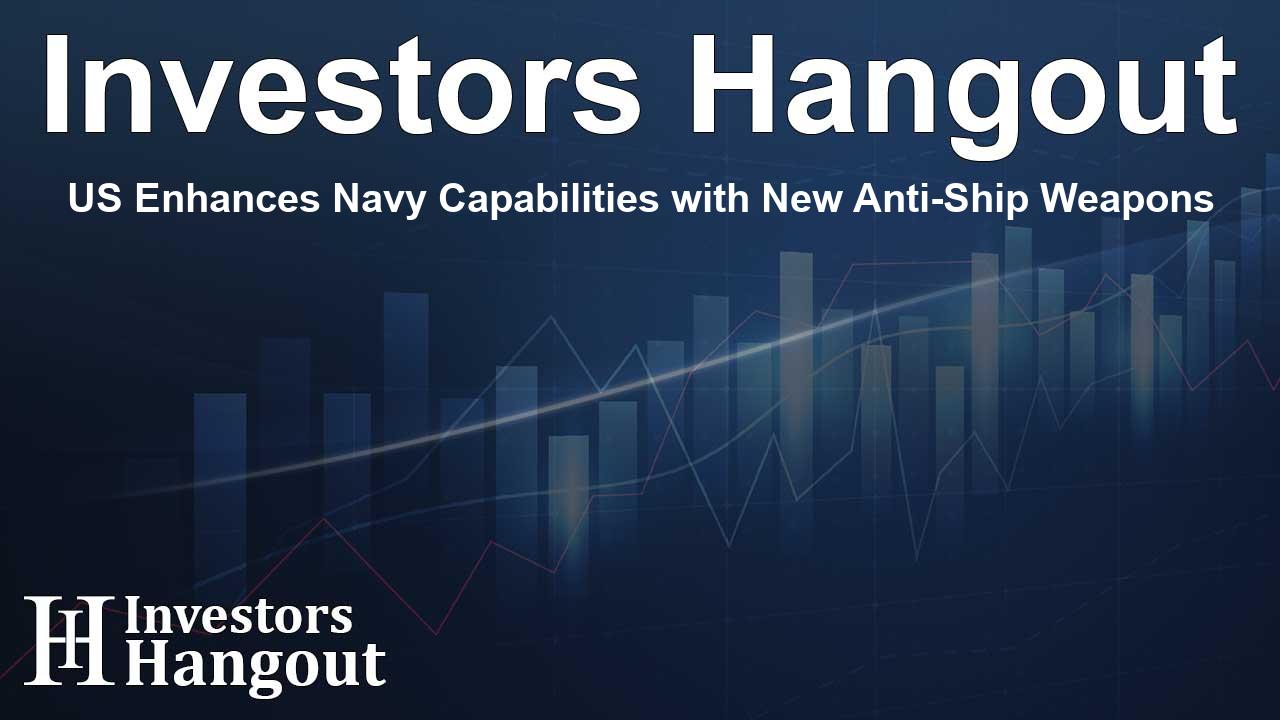US Enhances Navy Capabilities with New Anti-Ship Weapons

The United States' Strategic Shift in Anti-Ship Weapons
In recent years, the United States has sharpened its focus on developing a wide array of anti-ship weapons. This initiative is a key aspect of U.S. efforts to counter China's robust military capabilities in the Indo-Pacific region. The urgency to strengthen these defenses has grown amid changing global security dynamics and rising geopolitical tensions.
Embracing an 'Affordable Mass' Approach
With the skyrocketing costs of advanced weaponry, there's been a noticeable shift towards a philosophy called 'affordable mass.' According to industry professionals, this approach prioritizes the creation of low-cost yet effective weapons that can be produced in large numbers. This strategy ensures that U.S. forces are not only well-equipped, but also ready to face any emerging challenges from adversaries.
Introducing QUICKSINK: A Revolutionary Innovation
One of the most remarkable advancements in the U.S. military arsenal is the QUICKSINK bomb. Designed to be both inexpensive and easy to deploy, QUICKSINK employs sophisticated GPS technology that allows it to accurately track moving targets at sea. Recent tests by the U.S. Air Force demonstrate its capabilities, signaling a potential new era in naval combat where sheer quantity can help offset numerical disadvantages.
The Impact of New Technologies
Developed by Boeing, QUICKSINK is designed to work alongside existing munitions like Joint Direct Attack Munitions, boosting the effectiveness and versatility of U.S. air strikes. By converting standard bombs into precision-guided munitions, the U.S. military aims to deliver a significant blow to any defense systems put up by potential adversaries.
Building Up the Indo-Pacific Command
As the U.S. military gears up for possible conflicts, there’s a growing demand for more QUICKSINK weapons. Sources suggest that the U.S. Indo-Pacific Command plans to deploy thousands of these groundbreaking munitions, though specific requests remain classified. The strategy is straightforward: overwhelm enemy defenses through sheer numbers.
Diversifying Anti-Ship Platforms
The U.S. has also broadened its anti-ship options via various platforms stationed across the region. Notably, the Army has moved forward with the deployment of Typhon mobile missile batteries, which can launch advanced missiles efficiently, increasing both deterrence and operational flexibility. This deployment highlights the U.S.' commitment to adapting to the challenges posed by the People's Liberation Army Navy (PLAN).
Utilizing Existing Capabilities
Thanks to a range of existing military assets and technologies, the U.S. can swiftly develop and deploy new anti-ship weapons. Transitioning to the production of SM-6 missiles and acquiring Tomahawk missiles are vital components of this strategy, showcasing a deliberate response to the changing maritime threat environment.
Strengthening Regional Alliances
Strategically placing anti-ship weaponry in areas such as the Philippines would greatly enhance the U.S. ability to contest Chinese claims over the South China Sea. This initiative would not only reinforce regional allies but also send a strong message that the U.S. is committed to maintaining freedom of navigation and deterring potential aggression in contested waters.
Learning from Global Conflicts
Lessons learned from conflicts in other regions, like the Red Sea, underline the importance of robust deterrence strategies. Overlooking the threats posed by low-cost offensive systems can lead to serious vulnerabilities for nations focused on defense. Understanding these trends is essential to shaping U.S. military initiatives effectively.
Conclusion
By integrating innovative technologies with strategic planning, the United States is redefining its approach to naval warfare in the Indo-Pacific. With an emphasis on building a diverse and affordable arsenal, the U.S. aims to level the playing field against evolving adversaries, ensuring peace and stability in a complex global landscape.
Frequently Asked Questions
What is the QUICKSINK weapon?
QUICKSINK is an innovative, low-cost bomb designed to enhance the U.S. military's anti-ship capabilities by effectively tracking and destroying maritime targets.
How does the US plan to counter China in the Indo-Pacific?
The US is increasing its arsenal of affordable anti-ship weapons, including QUICKSINK and the Typhon mobile missile batteries, to deter and defend against Chinese military expansion.
Why is the 'affordable mass' strategy important?
This strategy emphasizes the production of numerous less expensive weapons that can effectively overwhelm enemy defenses, allowing the U.S. to compete with China's missile capabilities.
Where are the US anti-ship weapons being deployed?
Key deployments include the Philippines and other strategic locations in the Indo-Pacific region to enhance regional security and deter potential threats.
What role do regional alliances play in US military strategy?
Regional alliances are essential for reinforcing collective security, sharing resources, and demonstrating a united front against potential threats, particularly from China.
About The Author
Contact Dylan Bailey privately here. Or send an email with ATTN: Dylan Bailey as the subject to contact@investorshangout.com.
About Investors Hangout
Investors Hangout is a leading online stock forum for financial discussion and learning, offering a wide range of free tools and resources. It draws in traders of all levels, who exchange market knowledge, investigate trading tactics, and keep an eye on industry developments in real time. Featuring financial articles, stock message boards, quotes, charts, company profiles, and live news updates. Through cooperative learning and a wealth of informational resources, it helps users from novices creating their first portfolios to experts honing their techniques. Join Investors Hangout today: https://investorshangout.com/
The content of this article is based on factual, publicly available information and does not represent legal, financial, or investment advice. Investors Hangout does not offer financial advice, and the author is not a licensed financial advisor. Consult a qualified advisor before making any financial or investment decisions based on this article. This article should not be considered advice to purchase, sell, or hold any securities or other investments. If any of the material provided here is inaccurate, please contact us for corrections.
